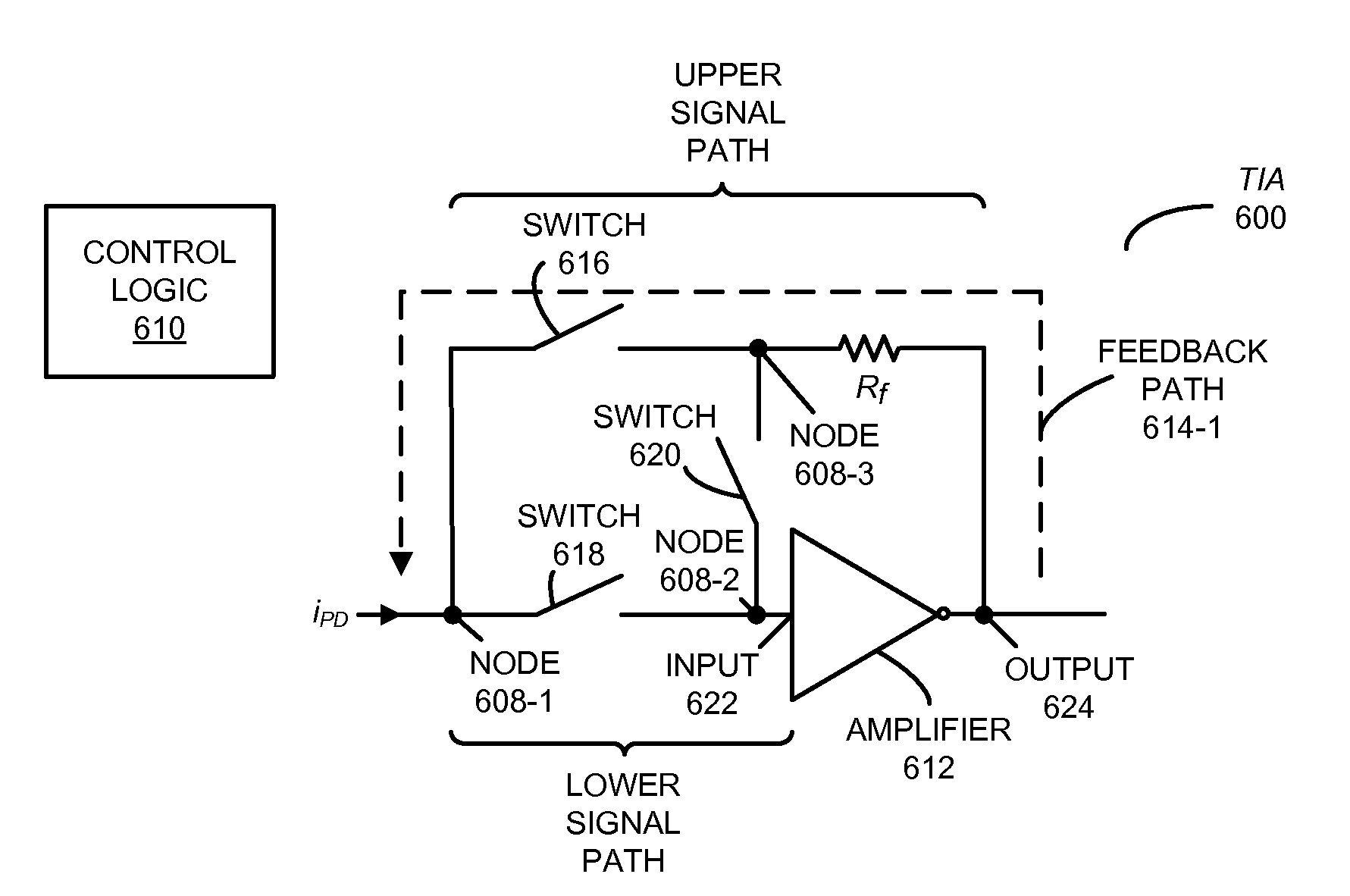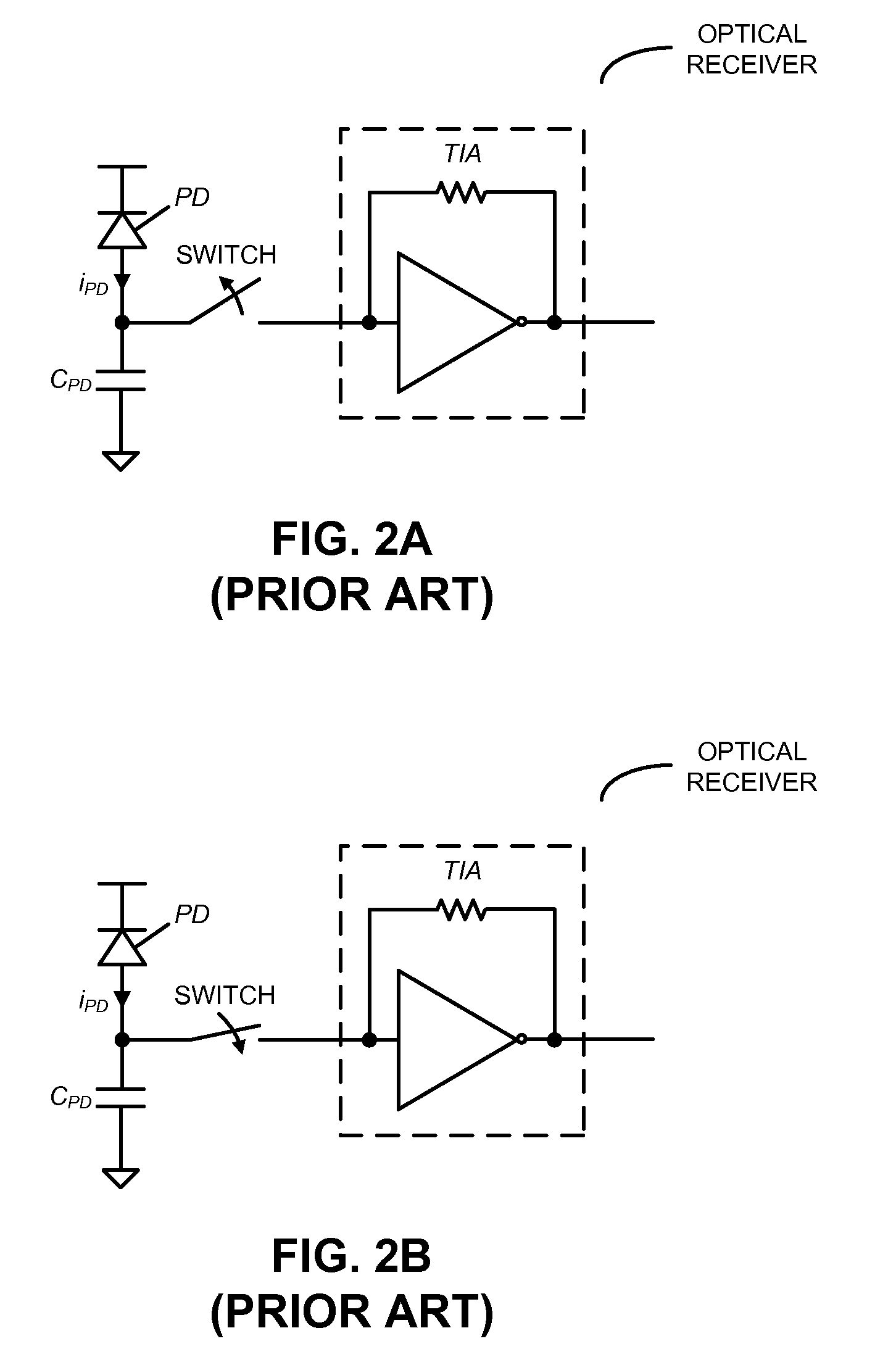Input isolation of a transimpedance amplifier in optical receivers
a transimpedance amplifier and optical receiver technology, applied in the field of optical receivers, can solve the problems of deteriorating affecting the frequency response of the switch, and affecting the performance of the optical receiver
- Summary
- Abstract
- Description
- Claims
- Application Information
AI Technical Summary
Benefits of technology
Problems solved by technology
Method used
Image
Examples
Embodiment Construction
[0040]Embodiments of an optical receiver, a system that includes the optical receiver, and a technique for calibrating and biasing the optical receiver are described. This optical receiver has two operating modes: a calibration mode and a normal mode. During the normal mode, switches are used to electrically couple an input of a transimpedance amplifier (TIA) to an optical-to-electrical (OE) converter that receives an optical signal and provides a corresponding analog electrical signal. Moreover, during the calibration mode, the switches are used to electrically isolate the input of the TIA from the OE converter while maintaining a feedback path from an output of the TIA to the input of the TIA, thereby ensuring proper bias of the TIA during calibration. Furthermore, a frequency response of the TIA during the normal mode is substantially unchanged over an operating bandwidth of the TIA by the capability to electrically isolate the input of the TIA from the OE converter during the ca...
PUM
 Login to View More
Login to View More Abstract
Description
Claims
Application Information
 Login to View More
Login to View More - R&D
- Intellectual Property
- Life Sciences
- Materials
- Tech Scout
- Unparalleled Data Quality
- Higher Quality Content
- 60% Fewer Hallucinations
Browse by: Latest US Patents, China's latest patents, Technical Efficacy Thesaurus, Application Domain, Technology Topic, Popular Technical Reports.
© 2025 PatSnap. All rights reserved.Legal|Privacy policy|Modern Slavery Act Transparency Statement|Sitemap|About US| Contact US: help@patsnap.com



